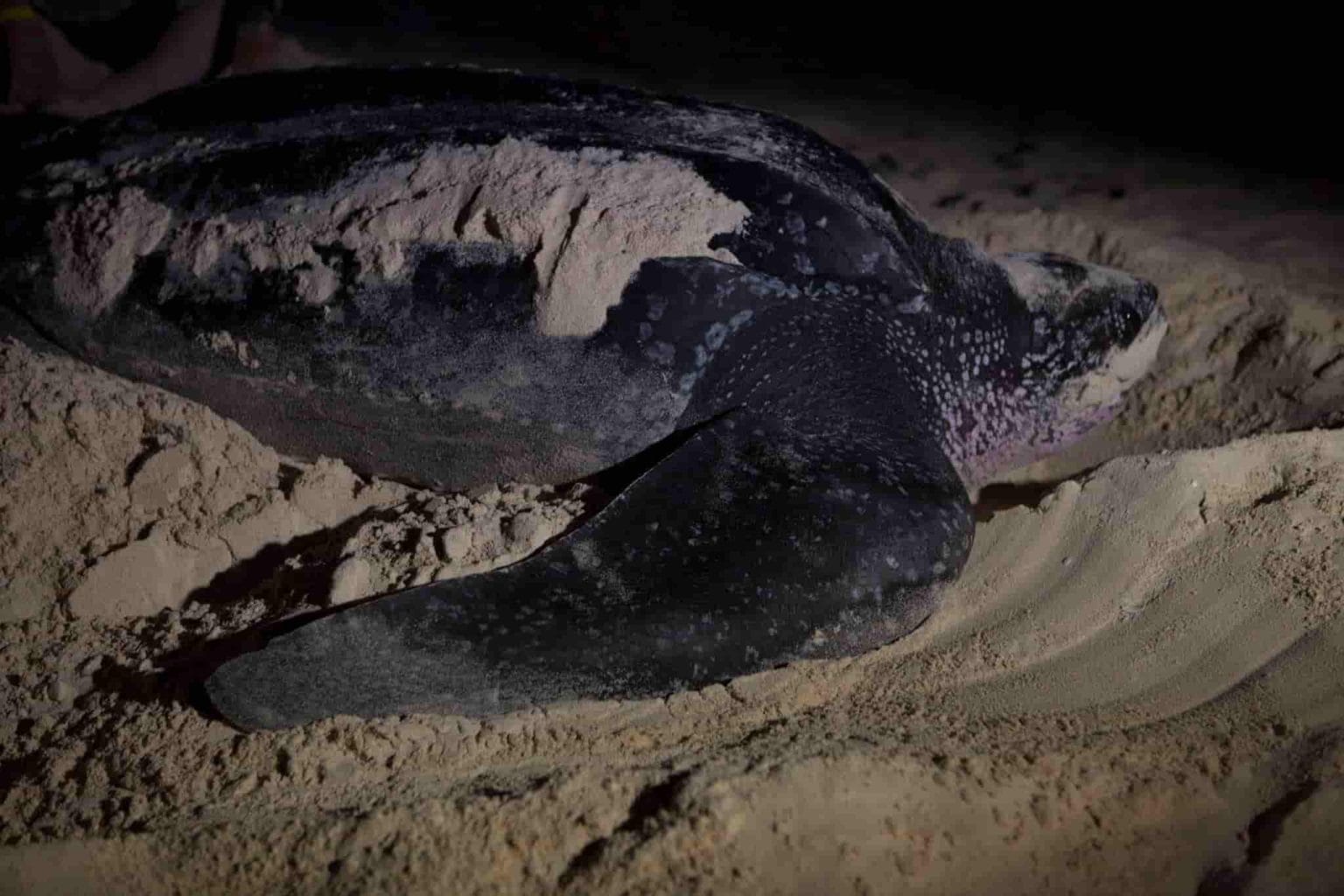Prepare yourself for an exhilarating adventure as we delve into the awe-inspiring world of the Tinglar turtle, also known as the majestic Leatherback sea turtle. Its colossal size, unique leathery shell, and extraordinary migrations will take your breath away. Join us on this captivating journey as we explore the depths of the Tinglar turtle’s existence, unraveling its mysteries and marveling at its resilience.
Ocean Giants: A Tinglar Turtle Tale
Imagine a creature gliding through the ocean depths, as big as a small car, with a leathery back and powerful flippers. That’s our friend, the Tinglar turtle, the largest turtle on Earth!
These gentle giants can grow up to 8 feet long – that’s taller than most doorways! – and weigh over a thousand pounds. Unlike their hard-shelled cousins, the Tinglar has a special, leathery shell that helps them dive deep into the ocean. They’re like the marathon swimmers of the turtle world, holding their breath for ages, sometimes staying underwater for over an hour!
And where do they go on these epic dives? Scientists believe they plunge to depths of over 4,000 feet, exploring a world we can only imagine!
A Global Odyssey: The Tinglar’s Travels
They’re world travelers, these Tinglars. They swim across entire oceans, from warm tropical waters to the chilly coasts of Canada and even up into the Arctic Circle! They’re like the backpackers of the sea, always on the move, guided by an internal compass that allows them to navigate these vast distances.
And what fuels these incredible journeys? Mostly jellyfish. Their throats are specially designed to trap and swallow these slippery creatures, making them the ultimate jellyfish vacuum cleaners of the ocean. It’s an important job because too many jellyfish can be bad news for other sea creatures.
The Giants in Peril: Challenges to Survival
But here’s the thing: even though Tinglar turtles have been around for millions of years, they’re facing some big problems these days, many of them caused by us. Fishing nets accidentally trap them, pollution dirties their home, and climate change messes with their nesting beaches.
Scientists estimate that less than 20,000 Tinglar turtles remain globally, a startling decline that has pushed them towards the brink of extinction.
Hope on the Horizon: Protecting Ancient Mariners
The situation is dire, but there is still hope. Scientists are working hard to understand the threats facing Tinglar turtles and find solutions. They’re tracking them with satellite tags, studying their behavior, and creating protected areas where they can nest and feed in peace.
Dedicated individuals are working tirelessly to protect these gentle giants. Fishermen are encouraged to use Turtle Excluder Devices (TEDs) – escape hatches built into fishing nets, allowing turtles to get away unharmed.
Protecting the beaches where Tinglar turtles lay their eggs is also crucial. Imagine, these turtles travel thousands of miles across the ocean just to return to the same beach where they were born to lay their own eggs! It’s crucial that these nesting sites are kept safe and clean so that baby turtles have a fighting chance.
The Future of Giants: A Shared Responsibility
But conservationists and scientists can’t do it alone. We all have a role to play in protecting these incredible creatures. By supporting sustainable seafood, reducing our plastic use, and spreading the word about Tinglar conservation, we can help ensure that these ancient mariners continue to grace our oceans for generations to come.
Uncover the fascinating world of the tiny titmouse bird with our captivating collection of images that showcase their delicate beauty and playful nature. Did you know that tortoises have an incredibly long lifespan? Explore our detailed article on tortoise average lifespan to learn more about these remarkable creatures and their journey through time.
- Unlock Elemental 2 Secrets: Actionable Insights Now - April 2, 2025
- Lot’s Wife’s Name: Unveiling the Mystery of Sodom’s Fall - April 2, 2025
- Photocell Sensors: A Complete Guide for Selection and Implementation - April 2, 2025
















